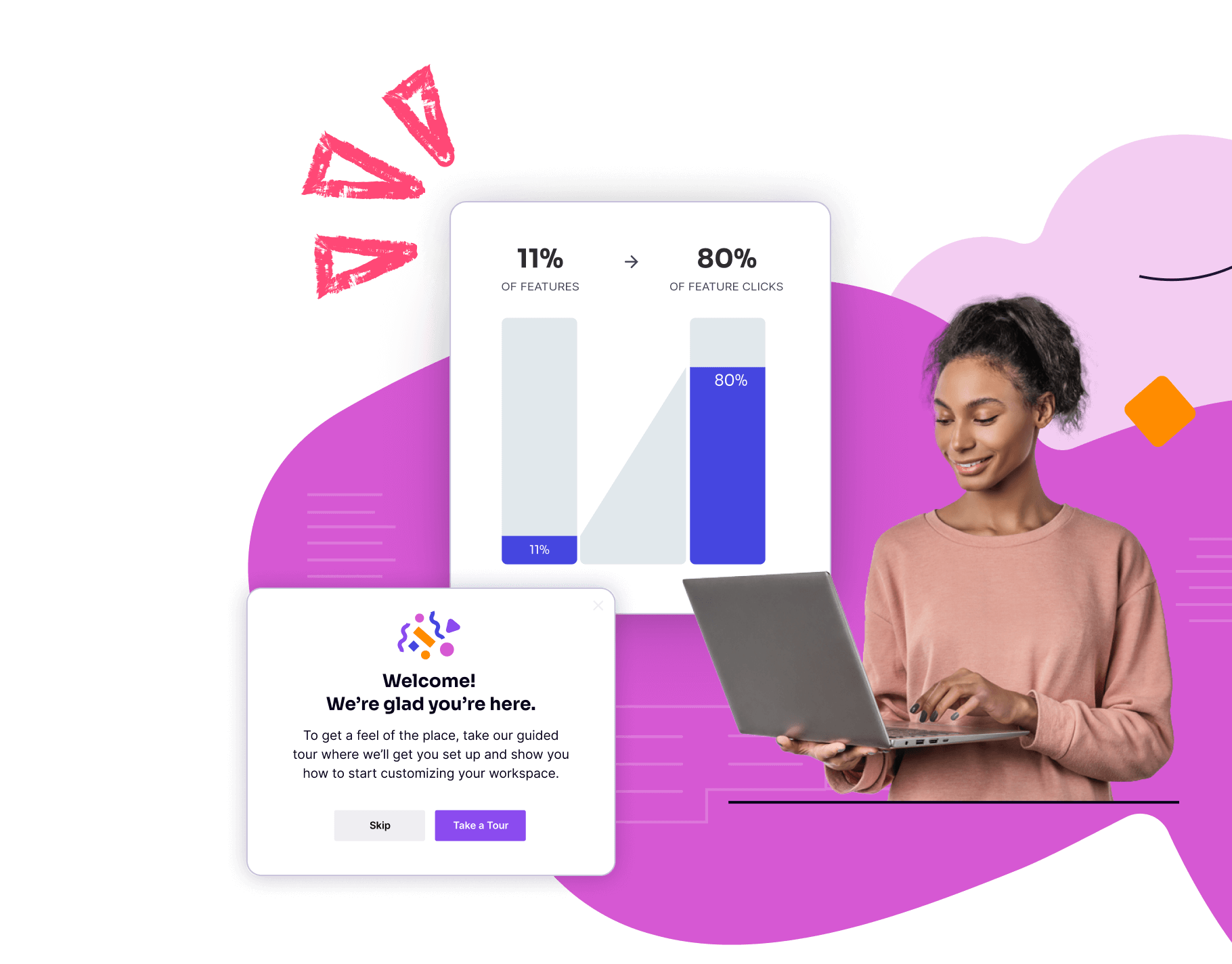
Product experience (PX)
A subset of user experience that focuses on the customer journey within an application.
Last updated: March 28, 2024
Dive deeper
Table of Contents
What is product experience?
Product experience (PX) is the customer’s journey within a product. PX is similar to user experience, however, product experience refers to the customer’s overall experience with the product, from beginning to end. In the software industry, product experience (PX) refers to the portion of the customer journey that takes place within the application.
As SaaS becomes the primary software delivery model, more of the customer’s engagement with a vendor takes place within the product. It’s where users get onboarded, where they learn about new features, and where they ultimately realize value. Today, leading product managers are focusing on understanding and improving the product experience they deliver to grow revenue and reduce customer churn.
For more traditional companies, focusing on the relationship between a web or mobile application and larger business objectives is typically part of a digital transformation strategy. Here, an orientation towards product experience is how companies of all sizes drive a meaningful transformation and take full advantage of digital products as part of their initiatives to modernize and become more data-driven and customer-centric.
How does product experience differ from user experience?
While user experience (UX) is concerned with the specific interactions a user has with a product, PX looks more broadly at the entire customer journey in the product. In many SaaS products, the complete customer journey from trial to purchase to renewal takes place within the product. Product teams, therefore, need to think not only about usability, but also about how the product can facilitate each stage of the journey and ensure that customers realize ongoing value.
For example, to improve their product experience, RE/MAX automated in-app onboarding and training for agents on its new CRM and used product analytics to track usage and adoption over time. This way, the product management team was able to continue iterating on these in-product experiences and could better identify where to invest in additional education and support.
Why does product experience matter?
Intuitive and personalized consumer product experiences are raising user expectations for business software, while subscription licensing models are making it easier than ever for dissatisfied customers to switch vendors. Usability and good design are no longer enough to meet today’s customer expectations. Software products must educate, engage, and adapt to their users’ needs, which heightens the value of product experience management.
But most companies don’t understand how users derive value or where they encounter friction inside an application. According to Pendo’s 2019 Feature Adoption Report, this means that as much as 80% of SaaS features go virtually unused, costing an estimated $30 billion in wasted R&D—a clear sign of a sub-optimal product experience.
To course-correct, product managers can frame and measure the product experience across five user lifecycle objectives with coinciding actions:
- Onboarding new users: Focus on customer readiness and engagement. Automate walkthroughs and in-app guides, targeting personalized messages based on usage and feedback.
- Driving product adoption: Design segmented customer journeys. Understand and measure user behavior with retroactive product analytics and user analytics. Employ tooltips to highlight features where and when they’re needed.
- Converting and retaining customers: Increase user health and satisfaction. Capture ongoing sentiment and just-in-time feedback with surveys and analyze funnels by cohort and interaction.
- Fostering expansion and growth: Focus on utilization and advocacy behaviors. Launch focused expansion campaigns directly in-app and identify, nurture, and reward champions.
- Planning and innovation: Determine what to build next based on customer demand. Extend the product experience based on feedback and requests, segmented by user and behavioral data.
Where can I learn more about product experience?
For those looking to dig a little deeper into product experience management, there are a number of books on related subjects, including “The Digital Transformation Playbook” by David Rogers, “Digital Death” by Dominic Mazzone, and “Leading Digital” by George Westerman, Didier Bonnet, and Andrew McAfee. Coursera also offers online courses on digital transformation in partnership with Boston Consulting Group, and Pendo has published helpful resources on how product experience relates to UI/UX and how data-driven guidance can improve the product experience.
You might also like
Why product experience software should be the foundation of your feature launch strategy


